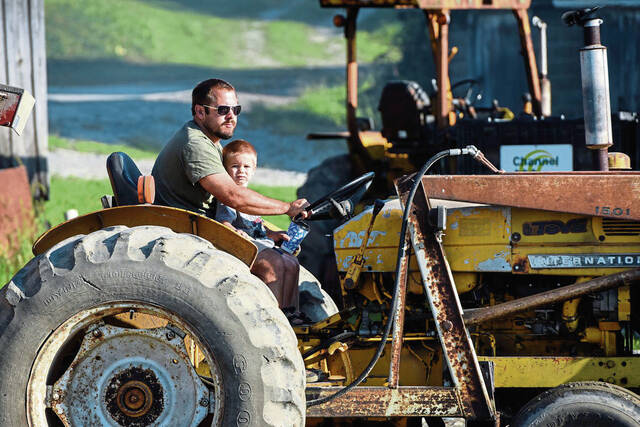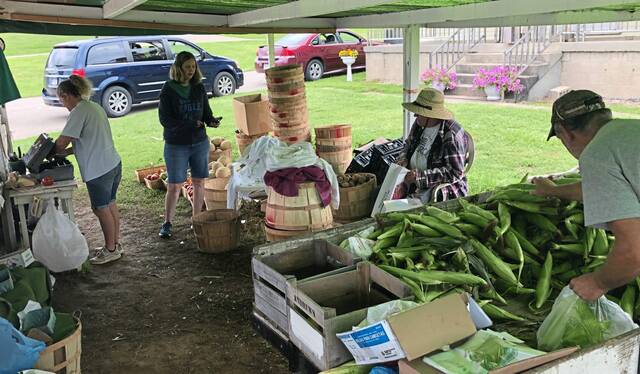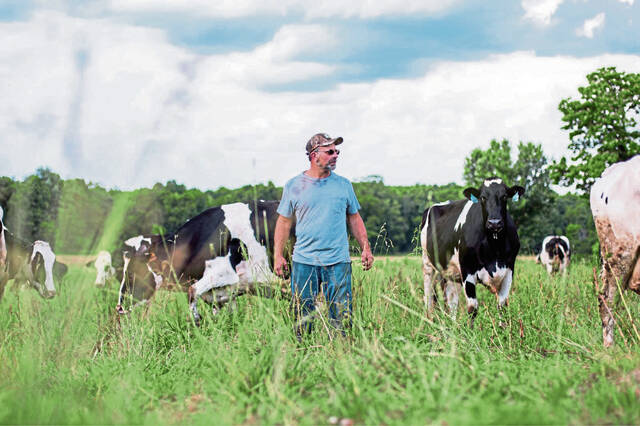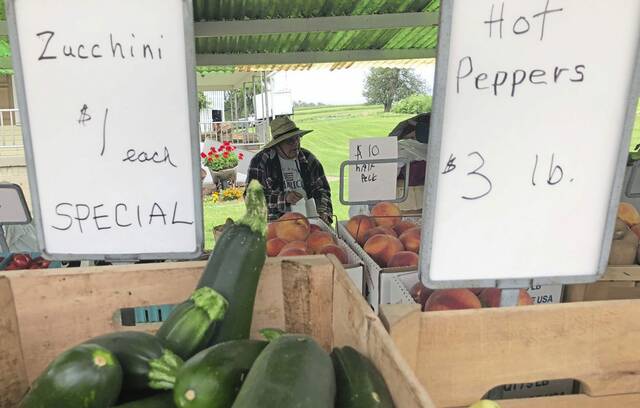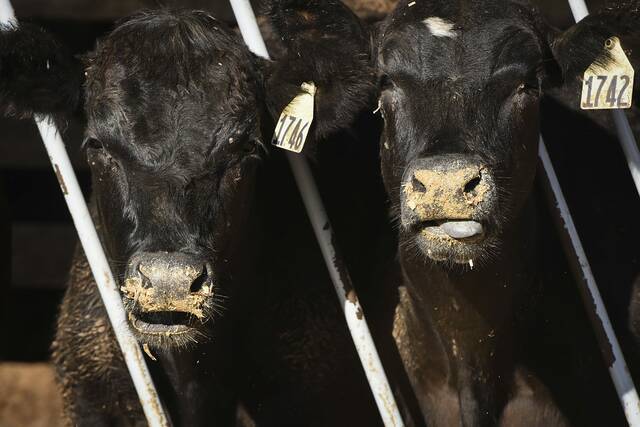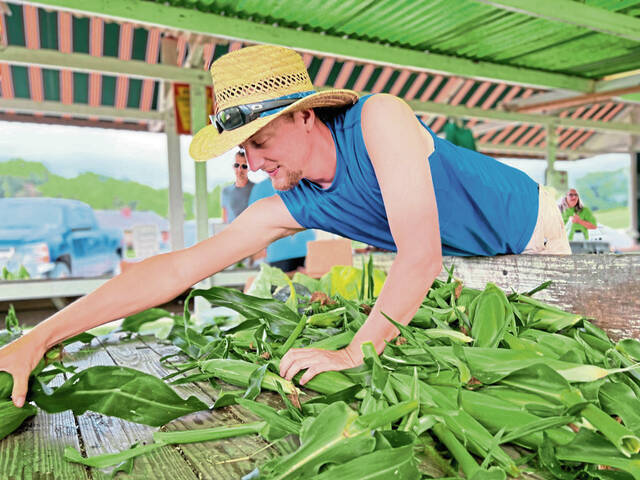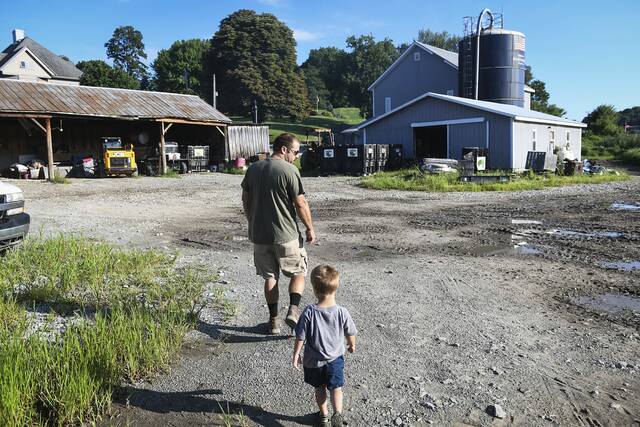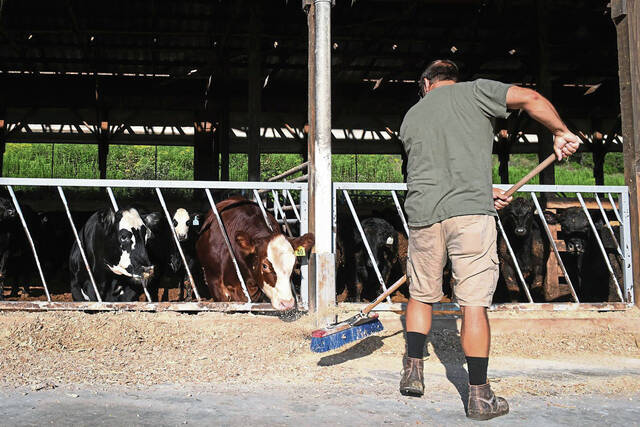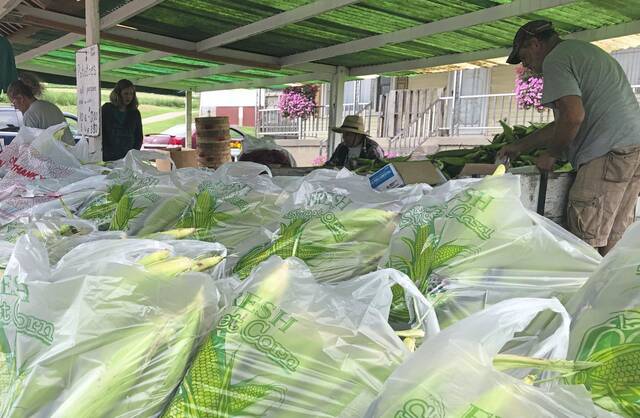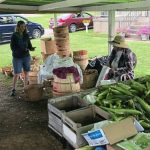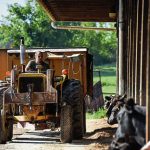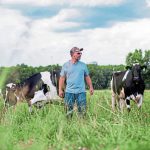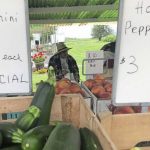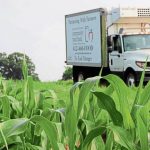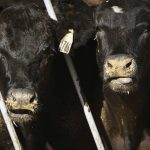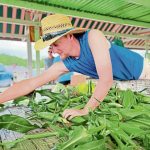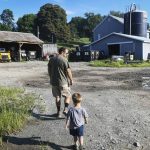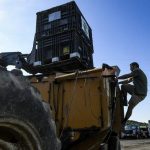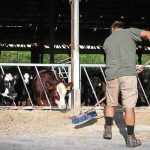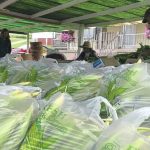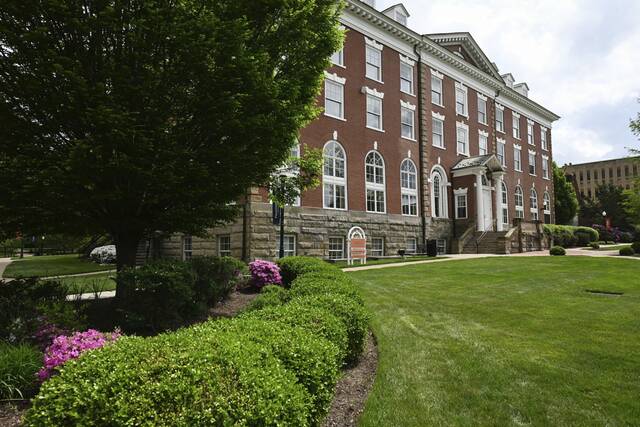When Ralph Myers, 85, looks at the farming operations around him, the difference is stark compared to three decades ago.
“In 1995, there were about 195 dairy farmers in Armstrong County,” said Myers, a fourth-generation farmer from Gilpin and patriarch at Myers Pickle Farm, which dates to 1866. “Today, there might be 15 to 20 of them, and there are none down in the southern part of the county.”
It’s just one example of how the agricultural landscape is changing in Western Pennsylvania.
Fewer farmers are working the land here than two generations ago. Those who remain committed are doing so on larger farms against harsher weather conditions, with slim profit margins on land they don’t necessarily own.
According to the U.S. Department of Agriculture, the number of farms in Pennsylvania decreased by about 15%, or 10,000 farms, between 2007 and 2017 — from about 63,000 to 53,000. The USDA estimated the state had about 52,700 farms in 2021. But the average size of a farm in that same time period has increased by 5%, from 124 to 137 acres.
“The margins keep getting smaller for farmers,” said Pennsylvania Farm Bureau President Rick Ebert, a Blairsville resident and farmer. “Older ones are going out of business and the others are taking on more land.”
Fewer farmers, more farmland
Although farm acreage may be increasing, ownership of that land is mostly staying the same as many farmers turn to leasing large tracts of their total acreage. That land can come from other farm families or, sometimes, from property owners looking for someone to help manage their acreage.
The reason is simple: Buying land is expensive.
In Winfield, Butler County, William Thiele is a sixth-generation dairy farmer. He owns 40 cows and works roughly 300 acres — about half of which he rents.
“When my grandfather was my age, land ownership, especially around here, was a lot more feasible,” said Thiele, 29. “You could make money simply by owning land and farming it. Today, that’s not the case, and it has a lot to do with your location.”
Thiele’s farm, which he works alongside his brother and parents, has changed quite a bit. Today, it is hemmed in by developing communities in the west (Cranberry), south (Buffalo Township) and north (Butler).
“We’re kind of surrounded by businesses, industry and housing, and that’s going to raise both land prices and land rent,” Thiele said. “There are a lot of farms around that own a few hundred acres but farm 1,000 (acres) because it’s just more economically feasible (to rent).”
Related:
Sweet corn, tomatoes are foundation for more diverse offerings from Western Pa. farmers
Neil Palmer of Palmer’s Farm in Hempfield is the fourth generation of his family to work in agriculture. He doesn’t own any of the land he works.
“My father owns some land, and the family farm that was once pretty sizable has been parceled out over the years to family,” Palmer said. “It remains farmland, though, except for a couple new homes that have been built over the years.”
At Logan Family Farms in Hempfield, Ben Logan is carrying on a farming tradition that started in the mid-1800s with the Eisaman family, whose name is on the road where the farm is located. Logan Family Farms raises cattle and hogs and sells the meat through a store on the farm.
“We own roughly 80 acres, and we rent an additional 1,400,” said Logan, 40.
Thiele said he rents land annually for about $40 an acre, largely from retired farmers or former farm families who have passed the land down to their children.
“Some are people who own 30 acres and they want it kept up and looking nice, so they’ll ask a local farmer to take care of it so it doesn’t grow over with weeds and brush,” he said. “A lot of them just ask us to farm it in order to manage it.”
Development pressure
Development is one of the key drivers putting pressure on the agricultural industry in Western Pennsylvania.
Communities such as Monroeville, Penn Hills and Plum are prime examples, having spent much of their formative years dominated by farmland that today is a fraction of what it was. In Penn Hills, Turner Dairy Farms still is located in the municipality, but the fields once home to cows are dominated by Penn Hills Elementary School and suburban neighborhoods. The milk Turner Dairy sells comes from other farms in more rural parts of Southwestern Pennsylvania.
Just like Thiele’s situation in Winfield, as more land becomes residential development, the cost of purchasing adjacent land rises, leaving fewer financially reasonable options for a farmer looking to expand.
In southern Butler County, Buffalo Township is trying to balance interest in residential development with its historically rural character.
“It looks like we’ve had a lot of development but, once you get off the main road, 75% to 80% of the township is still rural and farmland,” Buffalo Township Supervisor Gary Risch Sr. said. “We’ve updated our zoning ordinances over the years, and we’re doing a comprehensive plan right now. We’re looking very closely at where we want residential, commercial and rural zoning. We also have a large number of properties that have been put into farmland preservation.”
The state is trying to encourage property owners to put their land into farming instead of development through the Beginning Farmers Tax Credit Program. Started by the state agriculture department in 2020, the program allocates up to $6 million annually through 2030 to be used as tax credits for property owners who sell or rent land, animals, equipment, buildings or other assets to farmers who have been in business for less than a decade.
Although the tax credit is meant to benefit property owners, there also are state and federal programs to directly benefit farmers.
“In the (farming) world, we deal with the Farm Service Agency and conservation districts a lot,” Thiele said. “Both of those organizations can help secure grant money for projects, whether it’s putting up a fence, a heifer building or something else. It’s something we’re always looking at, to see what’s out there and what might help us in the future.”
Big challenges
Nearly every farmer interviewed by the Tribune-Review cited two main challenges that have largely arisen during the past two to three years: rising costs and labor shortages.
“I put a lot of money into my corn crop to try and make sure I have a good one,” Myers said. “But the cost of raising that corn has gone way up.”
Last season, Myers was paying $450 per ton for fertilizer. This year, that price has more than doubled to $1,000.
“I bought one new tire for a combine last week. It was $3,000,” Myers said. “You can’t guess at the prices. Everything is outrageous.”
As covid-19 pandemic restrictions began to ease, Palmer said he found he had to increase wages to attract enough seasonal and part-time workers.
“That really changed our business because, in just a couple years’ time, our prices went up significantly due to the substantial wage increases,” Palmer said. “But it does seem to be working for us. People support us, they’re willing to pay higher prices, and all of our workers are local. But that’s one of the most challenging components of what we’re doing.”
Food shortages at grocery stores in the early days of the pandemic shined a spotlight on local agriculture and helped drive interest in supporting local food chains. But for those who rely on farming as their sole source of income, each year brings new and difficult decisions.
“The climate seems to be changing,” Thiele said. “My dad said the weather now is much more volatile than it used to be. We always have to adapt to it, and so a lot of our practices are to help mitigate that.”
Myers agreed.
“The climate here is not what it was,” he said. “May used to be nice and warm. Now, it’s cooler and wet. This year has been very dry. You try to do better every year if you can. It doesn’t always work out.”
The ever-changing weather is part of why Logan favors such a diverse mix of products at his farm.
“What we do is driven so much by the weather, which I have no control over,” he said. “So, I have to spread risk among a lot of other things that I can control.”
Logan said the key to success has been to build on past accomplishments.
“You look at successful family businesses, and they aren’t necessarily doing anything groundbreaking,” Logan said. “They’re not Steve Jobs, but you can be successful through multiple generations, working together and building something together.
“Every generation here built a little bit more.”
Said Myers: “Some people are born to be carpenters. I was born to be a farmer. It’s in my blood.”


